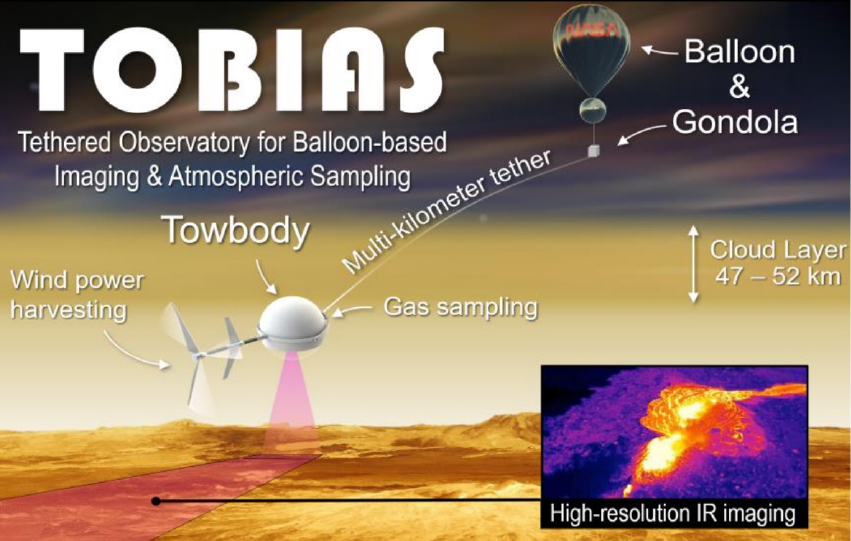Ben Hockman
NASA Jet Propulsion Laboratory
A basketball-sized towbody containing a camera, atmospheric sampling instruments, and support hardware is suspended on a multi-kilometer tether from a high-altitude balloon in the Venusian atmosphere, allowing it to peer beneath the dense cloud layer and image the surface at high resolution. The towbody harvests energy from the differential wind shear via an onboard wind turbine in order to power onboard instruments and active cooling system. Aerodynamic surfaces interacting with the relative wind shears of ~10 m/s allow the towbody to maintain stable pointing for imaging. This Phase I study will focus on four key feasibility aspects of the towbody system: (1) the tether system, including tether design, deployment system, and drag due to atmospheric wind shear, (2) towbody attitude stability, including its aerodynamic design and vibration suppression, (3) the power and thermal system for surviving the harsh Venusian atmosphere, and (4) the mission architecture and systems engineering aspects, particularly communications, towbody deployment, gondola interfaces, and the concept of operations. This “Tethered Observatory for Balloon-based Imaging and Atmospheric Sampling (TOBIAS)” would transform our understanding of the nature and evolution of Venus by enabling high resolution and spatial coverage nighttime IR imaging of surface geology, including active and past volcanism.


































